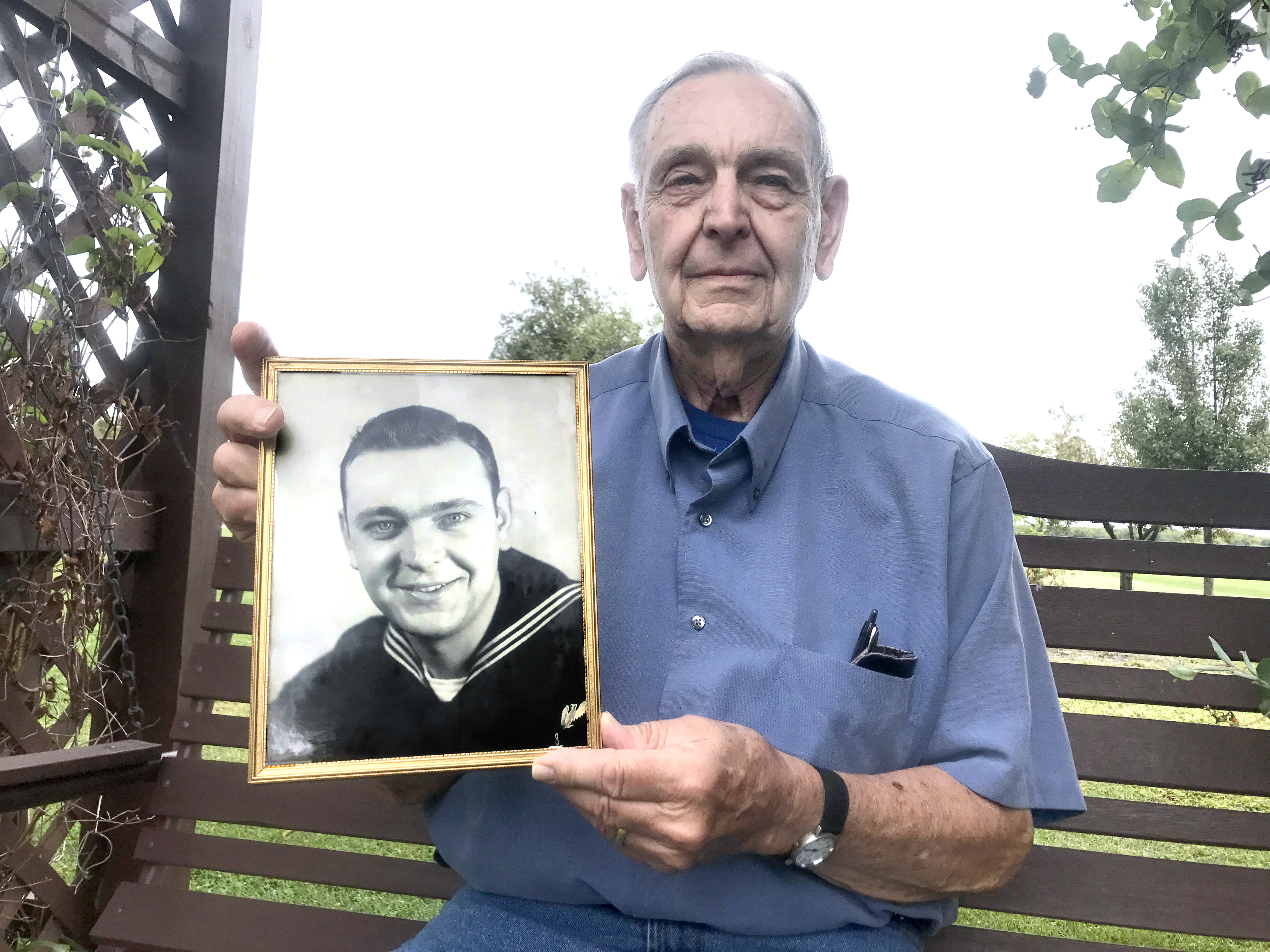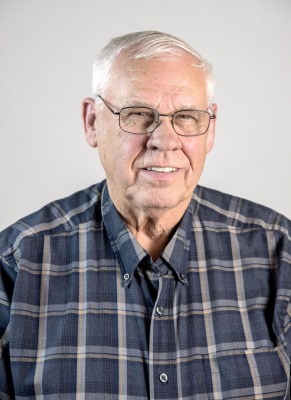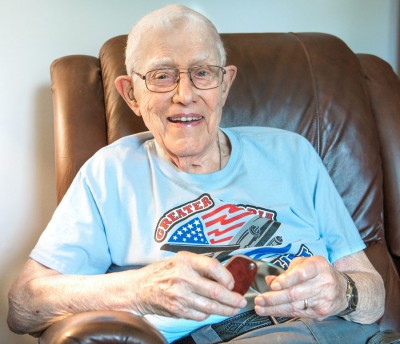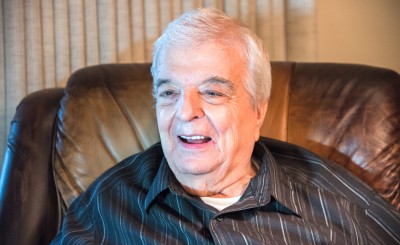William Schuldt
By Paul Wood

Photo By Will Brumleve/News-Gazette Media
BUCKLEY — William (Bill) Schuldt, one of five brothers in the armed services, served in the Seabees, the Navy’s engineers, during the Korean era.
He got as far as Cuba, where some of the Seabees built a fence around Guantanamo Bay Naval Base, before the Castro revolution made the base a surrounded pocket of the U.S., and the future home of a detention camp.
Schuldt, who just turned 86, grew up in Buckley when it was more of a bustling town than it is today.
“All the little towns around had all kinds of stores where you could shop in town,” he says.
His four older brothers who served — Elmer, Gilbert, Ray and Arnold — are all gone now. He also has a sister, Dorothy.
Unlike his brothers, he was born too late for World War II. “I graduated from grade school in 1945,” he said.
But there was only a short respite between the second world war and the Korean Conflict.
Like so many of his era, his main concern was to not have to dig foxholes.
“I knew I was going to be drafted, and I didn’t want to go into the Army, so I volunteered for the Navy in 1951, when the Korean War was going on,” Schuldt said. He served for four years altogether.
The Seabees (Construction Battalions) were created after Pearl Harbor, a replacement for civilian contractors, who could be treated as guerrillas if they resisted attack — the force was trained in underwater demolition.
The Seabees were skilled laborers, the highest paid in uniform during the war.
After World War II, the number of Seabees was greatly reduced, Schuldt said, but more than 10,000 men were called up for the Korean War.
From boot camp in Naval Station Great Lakes near Chicago, Schuldt was sent to Port Hueneme, Oxnard, Calif., rebuilding a base there. His carpentry skills seemed to be the way up.
But “military intelligence” didn’t have a need for carpenters, he said:
“They said, ‘Our quota was full for carpenters, do you want to stay in the Seabees?'”
If so, they would train him to be a steel worker — welding and tacking rebar, tying it together and prepping it to be put in concrete.
“Every time we left the States, they didn’t tell us much of anything,” he said. “We were never told where we were going to go.”
Instead of Korea, his unit was off to Cuba. His unit renovated Marine equipment in Naval Station Guantanamo Bay, originally built in 1903.
“We rebuilt Marine anti-aircraft from World War II. They had Marines there doing training; the Marines practiced shooting drones,” Schuldt said.
It was an unsettled time in Cuba, Schuldt recalled.
Fulgencio Batista y Zaldívar had been the elected president of the island, but from 1952 to 1959 he was U.S.-backed dictator. His second reign was remarkable for its corruption.
“There was a lot of money coming in,” Schuldt said. “The Swiss banks were glad to get it.”
With the danger of revolution imminent, security was tight.
“They put up chain-link fences 10 feet high with barbed wire at Gitmo; before there was just old wooden fence,” he said.
The biggest project was to build replacement housing for dependents of permanently stationed U.S. military. It was a huge project, utilizing 1,500 workers.
From Cuba, the unit regrouped in French Morocco.
The U.S.-issued weaponry was “carbines, which looked like toys,” Schuldt said. “The local military militia had swords and muskets.”
In the French sector, they built concrete buildings, heavily reinforced, at a naval air base. He saw Foreign Legion barracks.
In Newfoundland, Navy Lockheed Constellations would stop for fuel before going on to the Azores and England. At times, the fog was so heavy, they couldn’t reliably fly to the Azores — and hoped their fuel would get them to England.
The Navy decided, instead, to use jet fighters, which required a longer runway.
The Seabees extended the runway to accommodate these jet planes.
Back home, he was a maintenance welder in civil engineering at Chanute Air Force Base.
Chanute closed shortly after he left. He was also a custodian at a bank for a while.
The Schuldts married in 1955, and have three children.
Do you know a veteran who could share a story about military service? Contact staff writer Paul Wood at pwood@news-gazette.com.
Read more stories from local veterans:
 John McNeely
ARMSTRONG — Marine John McNeely held off three attacks by the Viet Cong in a short period, and survived a grenade and a …
John McNeely
ARMSTRONG — Marine John McNeely held off three attacks by the Viet Cong in a short period, and survived a grenade and a …
 Bill Clemens
CHAMPAIGN — On the fiercely contested island of Okinawa, Bill Clemens served as a Navy medic, close enough to the lines …
Bill Clemens
CHAMPAIGN — On the fiercely contested island of Okinawa, Bill Clemens served as a Navy medic, close enough to the lines …
 Samuel Conte
CHAMPAIGN — On D-Day, Cpl. Samuel Conte’s landing ship went to the wrong part of the beach, and sent its troops off too …
Samuel Conte
CHAMPAIGN — On D-Day, Cpl. Samuel Conte’s landing ship went to the wrong part of the beach, and sent its troops off too …